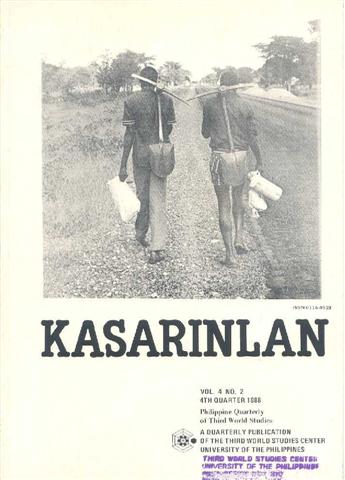The Political Economy of Industrialization in South Korea and Indonesia
Abstract
The paper is an attempt to answer the question: How did Indonesia and South Korea come to tread different paths in development, albeit they started from more or less the same base after the Second World War? The paper answered this by looking at three factors: internal, external, and the state. For internal factors the study cites the following: presence of ethnic and religious tensions in Indonesia and lack thereof in South Korea; the military-dominated regime in South Korea started a relatively clean government directed toward economic development through export-oriented industrialization, while Indonesia had the same experience with a military regime, the Sino-Indonesian bourgeoisie kept buying political protection and economic facilities from state bureaucrats; unlike South Korea that had land reform in the 1950s, Indonesia abandoned its land reform effort with the fall of Sukarno. The main external factor is the degree of U.S. intervention in the political and economic affairs in both countries. This, in turn, influences the quality of the state in both countries. High economic growth, clean bureaucratic state apparatus, and relatively equitable income distribution have been given priority by the United States to strengthen competition against North Korea, after the attempt to establish political democracy had failed. In case of Indonesia, the supervision of the western countries was not that intensive. As long as the Suharto government could curb the anti-western, anti-capitalist elements of the communists and radical nationalists, the western bloc did not intervene much. The oil boom in the 1970s made it possible to make the country relatively rich without doing much to improve the economic productivity of the nation, or to cleanse the bureaucratrice apparatus of corruption. Thus, together with the internal factors, Indonesia remained a weak state, without a rigorous program for a sound economic strategy.
Published
2009-07-21
How to Cite
BUDIMAN, Arief.
The Political Economy of Industrialization in South Korea and Indonesia.
Kasarinlan: Philippine Journal of Third World Studies, [S.l.], v. 4, n. 2, july 2009.
ISSN 2012-080X.
Available at: <https://journals.upd.edu.ph/index.php/kasarinlan/article/view/1358>. Date accessed: 02 sep. 2025.
Issue
Section
Features
By submitting a manuscript, the authors agree that the exclusive rights to reproduce and distribute the article have been given to the Third World Studies Center.



